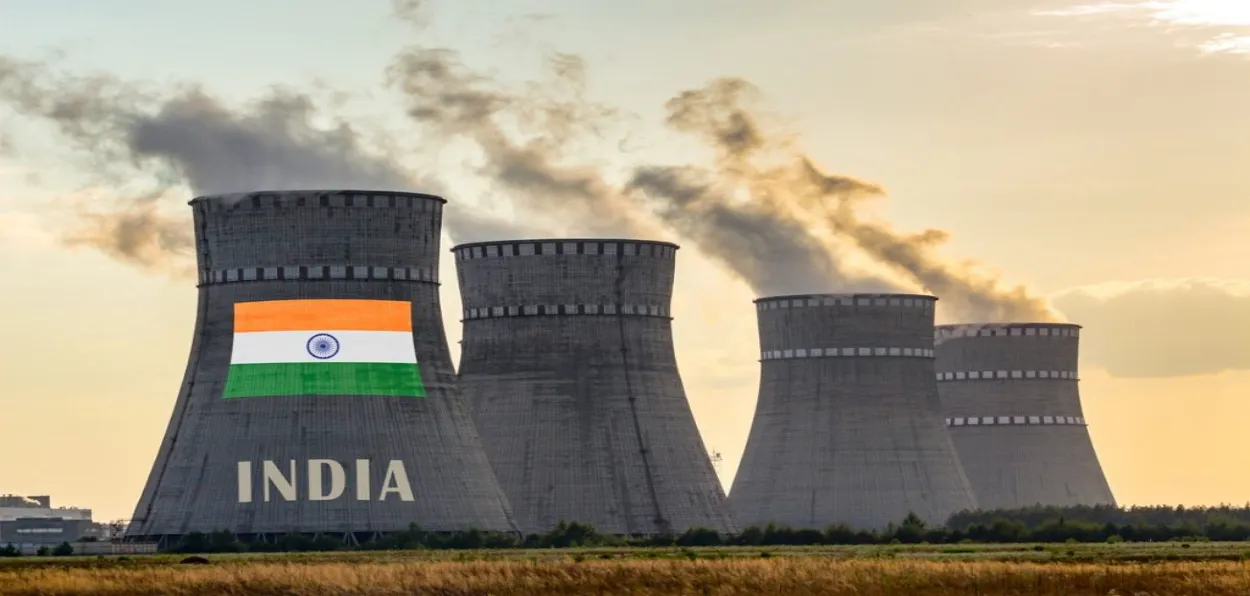
 Sushma Ramachandran
Sushma Ramachandran
Nuclear power finally looks set to become a significant part of India's energy mix. This comes after the Indo-U.S. civil nuclear deal yielded concrete results 16 years after it was signed in 2008. In March 2025, the U.S. Department of Energy cleared an American firm, Holtec International to design and build small modular nuclear reactors (SMRs) in India in collaboration with L&T, Tatas, and Holtec Asia. There are procedural hurdles including amendments in the Indian laws to allow the private sector to enter the nuclear energy arena.
With the government committed to carrying out these amendments speedily, however, it looks as if nuclear reactors are on the way to becoming part of the energy landscape in this country. Undoubtedly fossil fuels like crude oil and coal will retain a dominant role for a long time despite the need to cut carbon emissions. Renewable energy has also made big strides and accounts for 40 percent of power generating capacity. Yet expanding the role of a clean fuel like nuclear power will ensure that transition to zero carbon emissions by 2070.
India is also working on similar collaborations with countries like France and Russia to produce small modular reactors (SMRs). In February, a letter of intent on developing SMRs and advanced nuclear reactors was entered into with France, and the Maharashtra government signed an agreement in March for collaboration in manufacturing thorium-based SMRs with Rosatom of Russia.
SMRs are advanced nuclear reactors with a capacity from 30 to 300 MW per unit. According to the International Atomic Energy Agency (IAEA), this is about one-third the generating capacity of traditional nuclear power reactors. It says that SMRs that can produce a large amount of low-carbon electricity are not only physically smaller than conventional plants but modular, making it possible for them to be factory-assembled and transported as a unit to a location for installation.
Right now, just a few countries are manufacturing SMRs, but India is seeking to join this elite group. Along with foreign tie-ups, it recently launched a Nuclear Energy Mission for research and development of SMRs with an outlay of Rs. 20000 crore. This allocation is for the design and development of Bharat Small Modular Reactors (BSMR) by the Bhabha Atomic Research Centre and the Nuclear Power Corporation of India Limited (NPCIL).
Minister of State for Science and Technology, Jitendra Singh recently said that three new types of reactor technologies were being developed by nuclear scientists. These include 200 W and 55 MW pressurized water reactors and 5 MW gas-cooled reactors. The plan is to roll out a “fleet” of Bharat Small Reactors to meet its green energy target, he said.
Initially, Prototypes to establish the design, construction, and operation of new reactors will be rolled out and later it will move to commercial deployment. The 200 MW Bharat Small Modular Reactor is an Indigenous pressurized water reactor that can be used as a captive plant for energy-intensive industries like aluminum, steel, etc. All these reactors will be suitable for remote locations and result in the decarbonization of the energy sector.
However, as considerable time is needed to develop such technologies, the demonstration units of these reactors are expected to be ready in five to six years.
Given this long lead time, the urgency now being shown to go ahead in the area of SMRs is a welcome development. The target for nuclear energy capacity has been pegged at 100 GW by 2047 from the existing level of 8.5 GW. This may be an ambitious target but it is achievable largely by relying on SMRs which have numerous advantages compared to conventional large nuclear plants. Besides, half of this requirement for the target is expected from the state-owned NPCIL.
What makes the recent initiatives on nuclear energy even more interesting is the move towards thorium-based SMRs. The agreement with state-owned Russian firm Rosatom envisages the development of an SMR based on thorium as against conventional uranium. So far thorium-based reactors are still in the experimental stage but have many advantages. Their biggest advantages are that these are difficult to weaponize and produce less nuclear waste. Also since India has sizable thorium reserves, it would reduce dependence on imports for fissile materials like uranium. In the backdrop of China suspending rare earths exports, it becomes even more imperative to ensure that critical raw materials are easily available within the country.
The latest nuclear power initiatives are thus timely as the country must expand the range of options to ensure energy security. It will also help to move rapidly towards the goal of zero carbon emissions by 2070. Nuclear energy is not just a clean fuel, it also has several advantages over renewable energy resources. It is available consistently and is not constrained by climatic or weather conditions. With thorium entering the picture, it is also being viewed as a sustainable energy source for the future. Some countries like China have set up experimental thorium-based reactors and India will have to speed up research efforts to catch up in this area.
ALSO READ: With reforms, India could turn US-triggered tariff crisis into an opportunity
The drive to enhance nuclear power capacity in the country also needs to be viewed against the backdrop of challenging geopolitical conditions. The imminent trade war between the world’s biggest economies indicates that protectionist barriers are likely to rise in the coming days. In such a scenario, it is important to enhance domestic resources to meet rising fuel demand. The government has to accord the highest priority to expanding nuclear power capacity for energy security to the economy.
